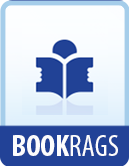Another storm delayed him at a port which he called Port Brasil. The word Brasil was the name which the Spaniards gave to the red log-wood, so valuable in dyeing, and various places received that name, where this wood was found. The name is derived from “Brasas,”—coals,—in allusion, probably, to the bright red color of the dye.
Sailing from this place, on Saturday, the sixteenth of June, they made sight of the island of Jamaica, but he pressed on without making any examination of the country, for four days sailing west and south-west. He then changed his course, and sailed for two days to the northwest and again two days to the north.
On Sunday, the twenty fourth of July, they saw land. This was the key now known as Cuyago, and they were at last close upon the mainland. After exploring this island they sailed again on Wednesday, the twenty-seventh, southwest and quarter southwest about ninety miles, and again they saw land, which is supposed to be the island of Guanaja or Bonacca, near the coast of Honduras.
The Indians on this island had some gold and some pearls. They had seen whites before. Columbus calls them men of good stature. Sailing from this island, he struck the mainland near Truxillo, about ten leagues from the island of Guanaja. He soon found the harbor, which we still know as the harbor of Truxillo, and from this point Columbus began a careful investigation of the coast.
He observed, what all navigators have since observed, the lack of harbors. He passed along as far as the river now known as the Tinto, where he took possession in the name of the sovereigns, calling this river the River of Possession. He found the natives savage, and the country of little account for his purposes. Still passing southward, he passed what we call the Mosquito Coast, to which he found the natives gave the name of Cariay.
These people were well disposed and willing to treat with them. They had some cotton, they had some gold. They wore very little clothing, and they painted their bodies, as most of the natives of the islands had done. He saw what he thought to be pigs and large mountain cats.
Still passing southward, running into such bays or other harbors as they found, he entered the “Admiral’s Bay,” in a country which had the name of Cerabaro, or Zerabora. Here an Indian brought a plate of gold and some other pieces of gold, and Columbus was, encouraged in his hopes of finding more.
The natives told him that if he would keep on he would find another bay which they called Arburarno, which is supposed to be the Laguna Chiriqui. They said the people, of that country, lived in the mountains. Here Columbus noticed the fact,—one which has given to philologists one of their central difficulties for four hundred years since,—that as he passed from one point to another of the American shores, the Indians did not understand each other’s language. “Every ten or twenty leagues they did not understand each other.” In entering the river Veragua, the Indians appeared armed with lances and arrows, some of them having gold also. Here, also, the people did not live upon the shore, but two or three leagues back in the interior, and they only came to the sea by their canoes upon the rivers.




